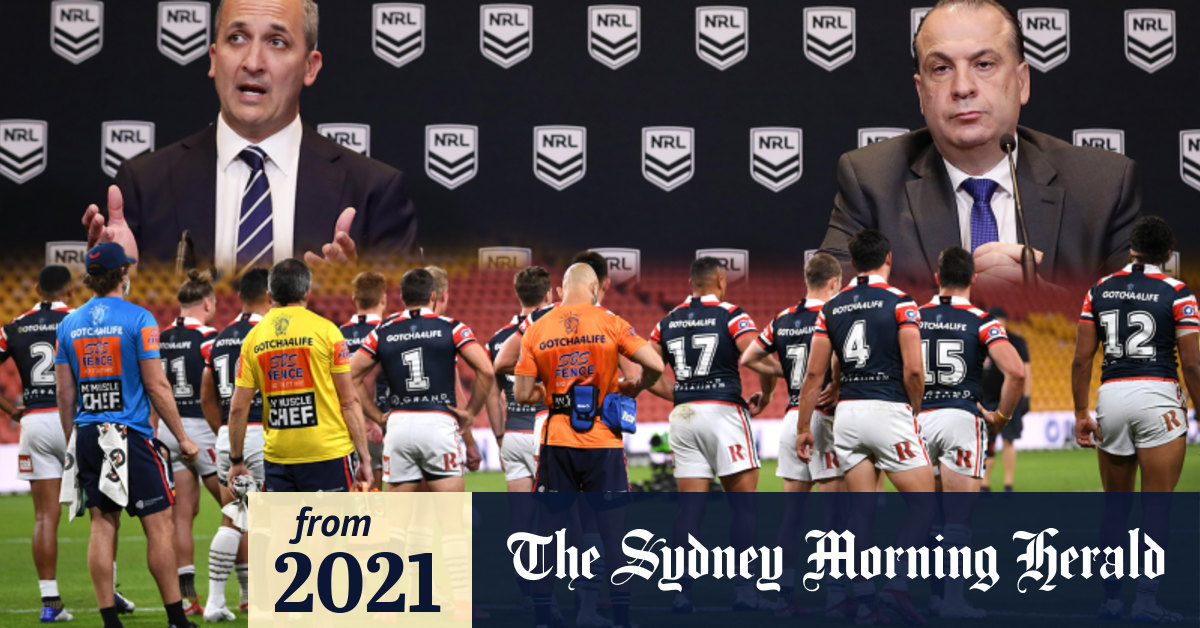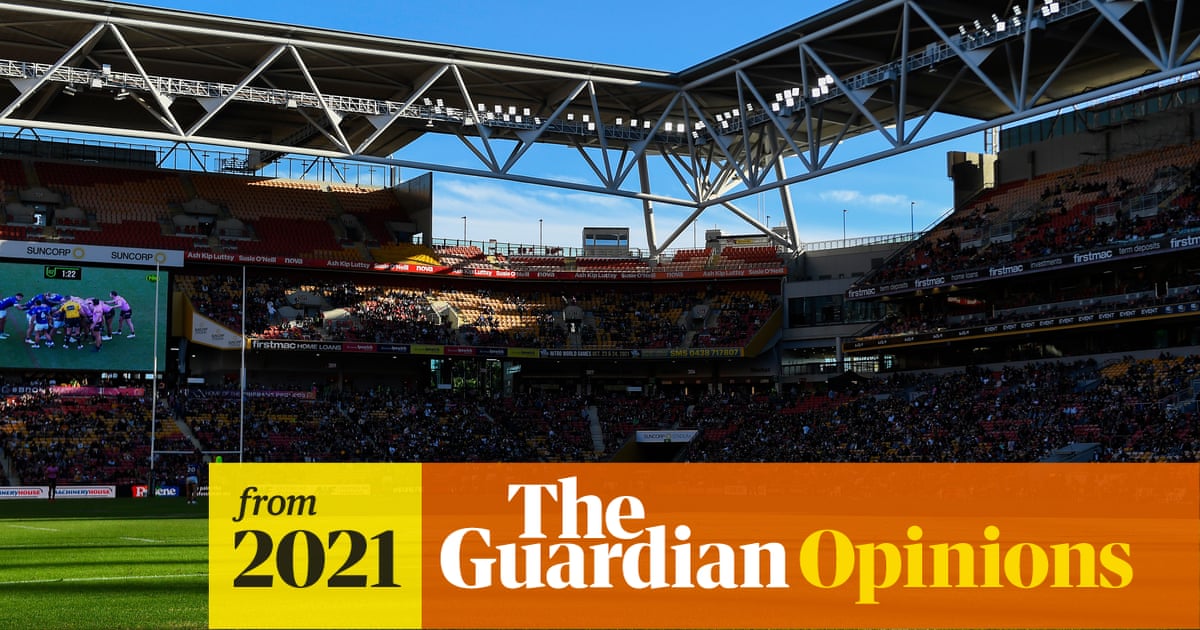Covid could yet force the NRL’s hand but the de facto nature of Suncorp Stadium as this year’s host venue shines a light on an ingrained ethos in the league
With Victoria struggling to contain its recent Covid-19 outbreak, Brisbane appears in the box seat to host the
NRL grand final. Yet questions remain as to whether a Brisbane premiership decider represents the best strategic choice, or simply the easiest and safest option for the code. Much like the AFL’s decision to relocate its grand final to Queensland instead of the sport’s West Australian heartland in 2020, the NRL’s choice of host will soon offer an insight into the code’s strategic intent. Yet if rugby league’s 113-year history is anything to go by, long-suffering expansionists won’t be holding their breath anticipating a brave choice.
Although there is a strong narrative that Brisbane deserves a grand final on account of hosting the competition for much of the season, sentiment should not override strategy given the incredible power of marquee fixtures as a game development tool. Come the conclusion of the regular season, 49% of NRL fixtures in 2021 will have taken place within Queensland (95 games), nearly triple the number in a typical season. Throw in all three State of Origin matches, and the sunshine state has had ample access to rugby league. Quite simply, there are very few local fans to gain, nor would local rugby league passion tangibly increase, from hosting a grand final in Brisbane. This is important, because creating new fans can generate more lifetime commercial value for the NRL than the maximised gate receipts of one match.
By contrast to Brisbane’s feast, much of the NRL’s remaining limited geographic footprint has suffered famine during the Covid era. Melbourne will have hosted a total of seven NRL games in two seasons by grand final day, while New Zealand has not hosted since 30 August 2019. West Australia has witnessed rugby league perhaps a dozen times in a decade. Covid may yet preclude any of these locations as potential grand final hosts, yet the de facto nature of Brisbane as the location for this year’s grand final serves as a microcosm for the apparent weakening of the code’s strategic ambitiousness under current ARLC leadership.
The same independent commission model that saw the AFL blossom into a national competition appears set on allowing rugby league to be both less national and less international than its potential allows for. Perth was removed from expansion discussions seemingly on a whim in 2019 with Peter V’landys, the ARLC chairman,
saying: “Forget wasting millions in rusted-on AFL states. We must undertake a full analysis but Perth does not have a huge league audience.” Unfortunately, rusted-on AFL states account for half of Australia’s population. So too was the ARLC’s apathy towards international rugby league evident in
its withdrawal from the Rugby League World Cup, ironically announced at the same time as a claimed desire to feature in the 2032 Olympic Games.
Although the ramifications of Covid and border wars may indeed leave Brisbane as the Steven Bradbury of NRL grand final locations, the strategic potential of the alternatives are agonisingly apparent to those outside the “
left arm (New South Wales), right arm (Queensland)” worldview of ARLC leadership. Even a 50% capacity crowd at the MCG offers the NRL an attendance of similar capacity to Brisbane or Auckland. With bookmakers giving the Melbourne Storm a 70% chance of making the grand final, a local final would be a boon for the code in the south. The capacity of Melburnians to jump on the rugby league bandwagon should not be understated: the Storm’s 2006 grand final saw a larger viewing audience in Melbourne (871,000) than in Sydney (817,000) or Brisbane (806,000). Yet with V’landys having
previously described Melbourne as “the most dreary city on Earth with the worst weather”, it is perhaps easier to imagine the Storm permanently relocating to sunny Queensland than an NRL grand final heading to Victoria.
So too would a New Zealand grand final provide stronger long-term strategic value than Brisbane, given the complete absence of the NRL on the island for two seasons. With Roger Tuivasa-Sheck having departed the code and star player Joseph Manu next at risk, an Auckland decider could offer a timely reminder to Kiwi children that there are sporting dreams other than an All Blacks jersey worth pursuing. Given V’landys’ enjoyment in bristling with
AFL types, even an NRL grand final in Tasmania could perhaps convert most the state’s residents from Australian rules football, such appears to be the discontent with AFL House in the Apple Isle at present.
The AFL would certainly be hoping the NRL continues to focus 100% of its efforts towards heartland markets – its own experience of taking a final to the Queensland expansion market last season illustrated how strategically valuable such a move can be. The AFL’s 2020 finale saw 383,000 Brisbane fans tune in,
the highest since 2004 and the largest ever local viewership for a game not featuring the local Lions. Perhaps more important is that this audience gain has carried over to the current season, with Lions games in 2021 nearly out-rating NRL fixtures in Brisbane on several occasions.
Despite such compelling strategic opportunities however, a Brisbane grand final would be entirely consistent with rugby league’s ingrained ethos. In 1914, the touring Great Britain team was scheduled to play their third and final Test against Australia in Melbourne, after the first two Tests in Sydney. The Melbourne Test would have exposed Victorians to the new code, perhaps chartering a course of history that could have seen rugby league become a far more national and powerful game today. Yet rugby league administrators relocated the game to Sydney instead, to protect the heartland market. Over a century later, it appears the sport remains largely true to perhaps its most core value.
Covid could yet force the NRL’s hand but the de facto nature of Suncorp Stadium as this year’s host venue shines a light on an ingrained ethos in the league

www.theguardian.com





 only fixation is you & PVL .
only fixation is you & PVL .